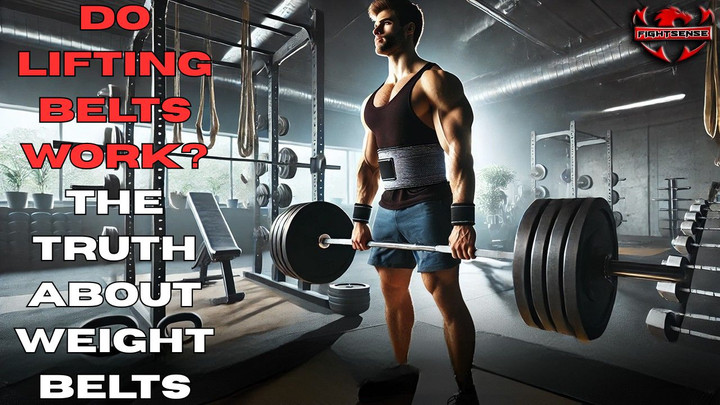Do lifting belts work? The Truth About Weight Belts
10th Apr 2025
If you have ever entered a gym, you most likely have seen lifters strapping on bulky belts before big lifts. But do lifting belts work, or are they just another gym craze, or do they have any purpose? Many lifters swear by them, saying they improve performance and help prevent injuries. Others contend that they, over time, undermine the core.
What is the true response, then? We will discuss in this tutorial do weight belts work, how they function, and whether you actually need one for your lifts.
Key Highlights:
- Do lifting belts work? Indeed, employed properly, they offer necessary support.
- They raise intra-abdominal pressure, therefore lowering spinal stress.
- Though it improves bracing, a weight belt does not substitute for core training.
- The correct belt helps to prevent injuries and correct lifting form.
- One should use them sensibly, since overuse can lead to dependency.
How Do Lifting Belts Work?
1. Enhancing Intra-Abdominal Pressure
The ability of a lifting belt to raise intra-abdominal pressure is among its main advantages. This pressure helps you safely lift more by stabilising your spine, like a natural weightlifting brace.
2. Reducing Stress on the Spine
The spine loads greatly during heavy movements like deadlifts and squats. A weightlifting belt helps to more fairly distribute this pressure, therefore lowering injury risks.
3. Improving Lifting Form
By limiting too much bending, wearing a lifting belt promotes correct form. Exercises where spinal alignment is vital will find the technique extremely helpful.
Do Weight Lifting Belts Work for every lift?
Best Exercises to Use a Lifting Belt
Most advantage a weight belt offers is:
- Squats help the lower back under loads of weight.
- Deadlifts increase core engagement and help to decompress spine.
- Help stabilize the lower back using overhead presses.
- Olympic lifts improve bracing for clean, jerk, and snatch.
When Not to Use a Lifting Belt
- Isolation exercises: Leg presses, triceps extensions, and bicep curls all call for neither one.
- Lightweight training: If you are not lifting almost maximum weights, you do not need a belt.
- Core workouts: Over-reliance on a lifting belt can weaken natural core activation.
Debunking Myths: Do Lifting Belts Work?
"A Lifting Belt Replaces Core Strength"
False! While it helps core engagement, a lifting belt does not replace appropriate strength building.
"You Should Always Wear a Belt"
Not true. Although lifting belts help, they should exclusively be used for big tasks requiring more support.
"Beginners Shouldn’t Use a Belt"
Not exactly. Learning correct bracing techniques with a belt will help novices lift weights.
How to Use a Lifting Belt Correctly
Position the Belt Properly
Not your hips; place it around your core to cover the abdomen area where you're bracing for stability.
Tighten It Correctly
It should be snug but not suffocating; you should still be able to breathe against it and inhale deeply.
Brace Properly
To optimise support, inhale deeply, contract your core, then push outward against the belt before rising.
Choosing the Best Weight Lifting Belt
- Leather vs. Nylon Belts
- Leather Belts – Perfect for powerlifting and heavy squats are leather belts.
- Nylon Belts – More flexible and appropriate for Olympic lifting and CrossFit is nylon belts.
Buckle vs. Velcro Closure
- Lever/Prong Buckle – For heavy lifters, a sturdy and robust buckle rather than a velcro closure lever/prong buckle is perfect.
- Velcro Strap – Easy to change but wears out with time
Width & Thickness
- 4-inch belt – Best for ordinary lifting
- 6-inch belt – Although it gives greater support, a 6-inch belt could feel constrictive.
- 10mm-13mm thickness: Thicker belts provide powerlifters more stability at 10 mm–13 mm thickness.
Conclusion
Do lifting belts work? Correct! A weight belt lowers injury risk, boosts performance, and increases stability. Still, lifting belts are most effective when used deliberately for big compound lifts rather than as a crutch.
Selecting the appropriate belt and applying it appropriately will improve your lifting performance without sacrificing inherent strength.Investing in a top-notch lifting belt is a wise choice if you take lifting heavy and injury-free very seriously.
Disclaimer
This page serves only for informative needs. Always consult a fitness professional to guarantee correct technique and safety before using a lifting belt.
FAQs
1. Do lifting belts work for beginners?
Yes! For novices lifting large weights, lifting belts assist them in learning correct bracing techniques.
2. Could a weight belt stop every kind of injury?
However, by stabilising the spine and increasing core pressure, it reduces the likelihood of lower back problems.
3. How tight ought a lifting belt to be?
It should be both loose enough to allow for deep breaths and tight enough to support bracing.
4. Do lifting belts work bench pressing?
Not at all. Exercises requiring core activation, such as deadlifts and squats, call for lifting belts most suited for them.
5. How should I keep my weight-lifting belt in excellent condition?
While nylon belts may be cleaned with a moist towel, leather belts need conditioning.

